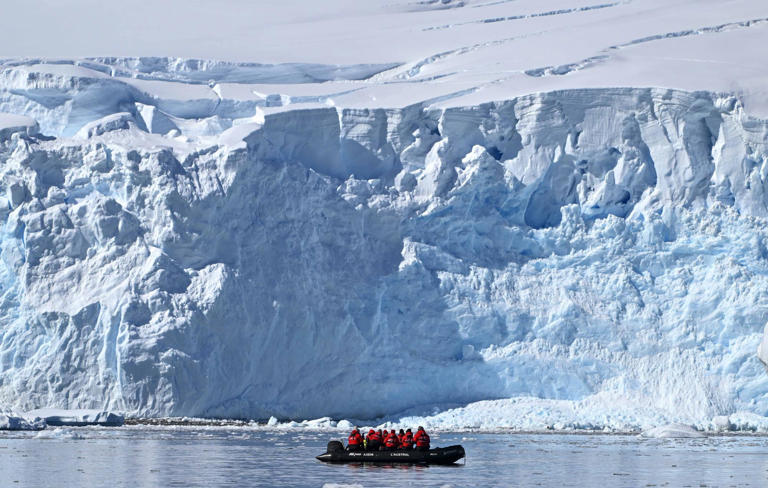
The rate is 10 times higher than the fastest natural rate experienced by our planet in thousands of years.
The pace of carbon dioxide (CO2) accumulation in the Earth’s atmosphere is accelerating at an unprecedented rate, surpassing any natural occurrences over the past 50,000 years by a factor of ten.
Undoubtedly, human activities are reshaping the planet’s climate, a fact substantiated by a plethora of scientific studies. The latest research underscores this reality, revealing that the current surge in atmospheric CO2 levels is unparalleled in the annals of natural history.

Image Credit: Katherine Stelling, Oregon State University
Scientists conducted a comprehensive analysis of Antarctic ice cores spanning millennia. Their findings unveiled a stark contrast between contemporary CO2 emissions and historical fluctuations. While the largest natural CO2 spike occurred approximately 7,000 years ago, elevating concentrations by 14 parts per million (ppm) over 55 years, today’s CO2 levels surge by the same margin in a mere 5 to 6 years.
Lead author Kathleen Wendt, an assistant professor at Oregon State University’s College of Earth, Ocean, and Atmospheric Sciences, emphasized the significance of studying historical trends. “Studying the past teaches us how today is different,” Wendt remarked. “The rate of CO2 change today really is unprecedented. Our research identified the fastest rates of past natural CO2 rise ever observed, and the rate occurring today, largely driven by human emissions, is 10 times higher.”

The study sheds light on enigmatic episodes known as Heinrich Events, which coincided with abrupt spikes in CO2 levels during the last ice age. Co-author Christo Buizert, also an associate professor in the same department, attributed these events to the collapse of the North American ice sheet, setting off a complex chain reaction affecting global climate patterns and carbon cycling.
Of particular concern are the implications for the Southern Ocean’s capacity to sequester CO2. Strengthening westerly winds, associated with both past Heinrich Events and contemporary climate change, are altering ocean circulation dynamics, facilitating the release of CO2 from oceanic reservoirs into the atmosphere.

“We rely on the Southern Ocean to take up part of the carbon dioxide we emit, but rapidly increasing southerly winds weaken its ability to do so,” Wendt cautioned.
The findings underscore the urgency of addressing anthropogenic CO2 emissions to mitigate the adverse impacts of climate change and preserve the stability of Earth’s ecosystems.

Leave a Reply